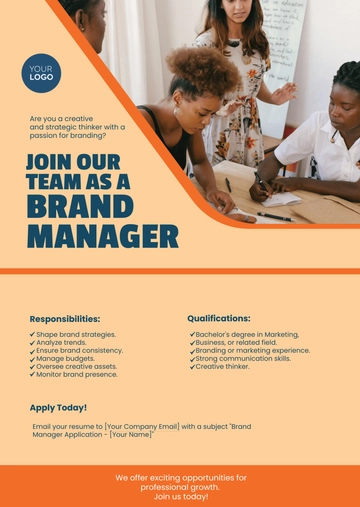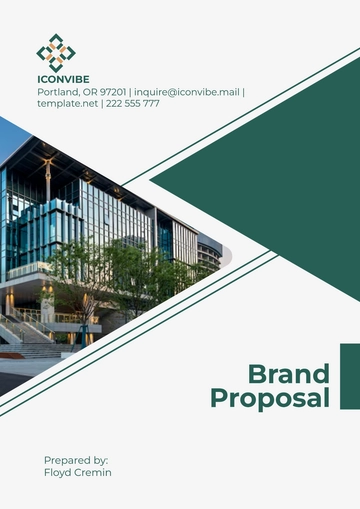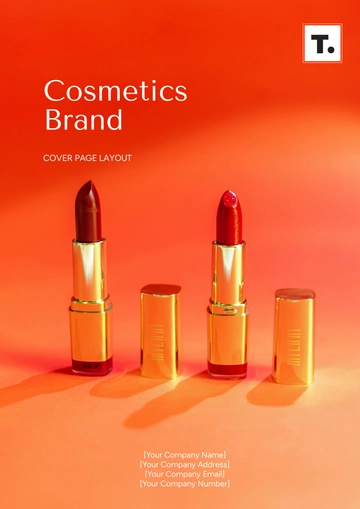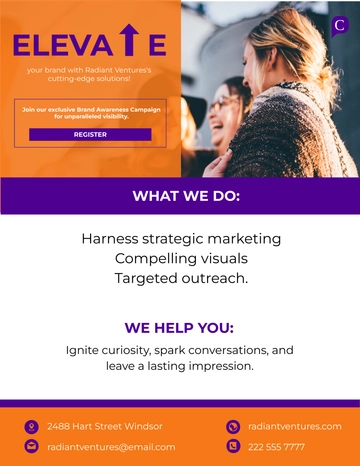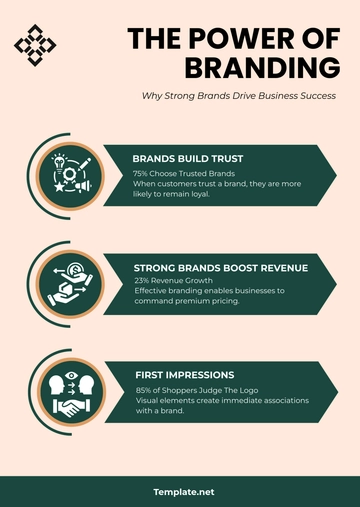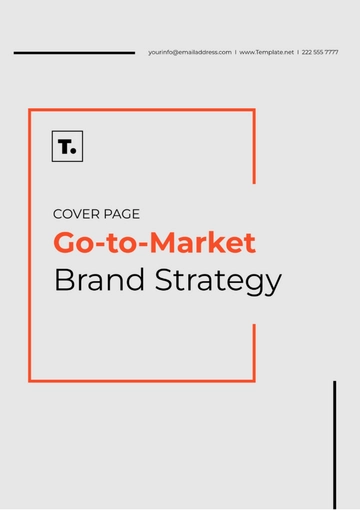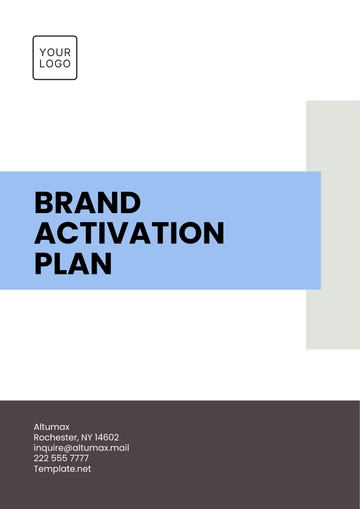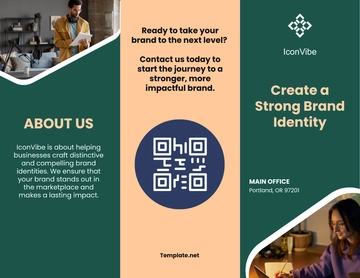Free Marketing Target Audience Research for Branding

for Branding
Abstract
In the constantly evolving landscape of business, the precise identification and understanding of one's target audience becomes paramount for the success of branding efforts. This research endeavors to meticulously delineate the target demographic most resonant with [Your Company Name], and the branding strategies that appeal most to this segment.
Utilizing a robust blend of data-driven methodologies, our study provides insights into age groups, regional preferences, and interests, offering a comprehensive blueprint for the company to streamline its branding outreach. The ultimate goal is not just to capture the attention of this audience but to foster lasting engagement, ensuring the brand's growth and sustainability in the competitive market.
Introduction
Branding serves as the cornerstone upon which businesses construct their identity and differentiate themselves from competitors. The imperative to establish a distinct and memorable brand is accentuated by the vast array of choices available to consumers. Understanding the target audience is more than just a marketing strategy; it's the foundation upon which meaningful relationships with consumers are built, resulting in brand loyalty and trust.
The Evolution of [Your Company Name]:
Over the past decade, [Your Company Name] has metamorphosed from a fledgling entity into a formidable player in its sector. This journey, marked by innovation, adaptability, and a consistent pursuit of excellence, has made it crucial to reevaluate and refine the brand's image in alignment with its evolved stature and the expectations of its expanding consumer base. Recognizing the ever-shifting dynamics of the market, it's imperative to continually reassess our target demographic to ensure our branding efforts resonate deeply and effectively.
Methodology
The backbone of any research lies in its methodological rigor, ensuring findings are both reliable and valid. For our exploration into [Your Company Name]'s target audience, a multifaceted approach was employed to gather nuanced insights, allowing us to paint a holistic picture of our demographic landscape.
Data Collection Techniques:
Online Surveys: A comprehensive questionnaire was disseminated to a diverse group of potential and existing customers. This digital format ensured a wide reach and allowed respondents the convenience of participation, resulting in a robust sample size of 10,000 respondents.
Focus Groups: Six focus groups were convened across different regions. Each group, consisting of 8-12 participants, provided in-depth qualitative insights into branding perceptions, preferences, and potential areas of improvement.
Data Analytics: Utilizing advanced data mining techniques, we sifted through the company's existing customer databases, social media engagements, and website traffic patterns to discern trends, preferences, and behaviors of our audience.
Sample Segmentation
Respondents were strategically segmented based on age, gender, region, and interests. This granularity enabled us to identify not just broad patterns but also niche preferences, ensuring our branding strategies are both inclusive and targeted.
Validity and Reliability Checks
To ensure the reliability of our findings, the survey was pilot-tested on a smaller sample before wider dissemination. Adjustments were made based on feedback to eliminate ambiguity and bias. Moreover, the consistency of findings across different data collection methods was checked to validate the results.
Results
The outcomes of our meticulous methodology presented an intriguing tapestry of insights into the demographic composition, preferences, and behavioral patterns of [Your Company Name]'s target audience:
This distribution underscores a pronounced engagement from the 25-34 age group, suggesting a young, dynamic audience with potential for long-term brand loyalty.
The regional data highlights North America and Europe as primary markets, but also emphasizes the growing importance of Asia, a burgeoning market with immense potential.
A significant inclination towards technology-related interests denotes a tech-savvy audience, which can greatly influence branding content and medium choices.
Behavioral Patterns:
60% of the audience engages with the company between 6 pm to 10 pm, hinting at peak engagement times.
Video content, especially tutorials and behind-the-scenes looks, garnered the most engagement, followed closely by infographics and blog posts.
Feedback and Perceptions:
From our focus groups, a common sentiment emerged that [Your Company Name] is perceived as innovative and user-friendly. However, there were suggestions for enhanced customer support and more interactive platforms for feedback.
Discussion
The essence of the results garnered paints a vibrant tableau of the target audience's relationship with [Your Company Name]. This section delves deeper into the significance of the data, unraveling its implications for the brand and offering a more synthesized understanding of the audience's dynamics.
Age-Centric Insights:
The dominant engagement from the 25-34 age bracket underscores the importance of catering to a demographic that's technologically adept, discerning, and at a stage in life where brand loyalties are solidified. This age group, often characterized by young professionals, exhibits a blend of aspirational and practical purchasing behaviors.
Geographical Significance
While North America and Europe emerge as established markets with consistent engagement, the notable interest from Asia underscores the significance of emerging markets. The Asian market's engagement pattern may indicate not just a growing interest, but also an opportunity to diversify branding efforts to appeal to varied cultural nuances.
Interest-Driven Branding
The pronounced inclination towards technology suggests an audience that values innovation, efficiency, and cutting-edge solutions. This is an invitation for the company to bolster its technological endeavors, ensuring that branding messages underscore tech-driven USPs and that the company remains at the forefront of innovation.
Behavioral Implications
The evening engagement peak indicates an audience that interacts with the brand post their regular working hours, hinting at the possibility of them viewing the company's content as a blend of leisure and informative consumption. The preference for video content emphasizes the need for dynamic, visually engaging branding campaigns.
Perceptive Feedback:
The positive perception of the company being innovative and user-friendly is a testament to the brand's past efforts. However, the call for enhanced customer support highlights an area for improvement, emphasizing the need for a two-way, responsive communication channel with the audience.
In essence, the discussion elucidates that while [Your Company Name] has made significant inroads in establishing a positive brand perception, there remain avenues to enhance engagement, diversify outreach, and continually adapt to the evolving preferences of the target audience.
Sustainability and Social Responsibility
As the modern consumer grows increasingly conscious of environmental and social issues, aligning [Your Company Name] with sustainable practices can further solidify its brand image. Initiatives could include:
Launching eco-friendly product lines or reducing carbon footprints in production processes.
Collaborating with NGOs or grassroots organizations for community-driven projects.
Highlighting and promoting these endeavors through transparent annual sustainability reports and dedicated marketing campaigns.
By emphasizing a commitment to social responsibility and sustainability, [Your Company Name] can not only appeal to a socially-conscious audience but also drive meaningful change in its industry and community.
Recommendations
Gleaning insights from the comprehensive data and subsequent discussions, it is imperative to chart out actionable strategies that can steer [Your Company Name] toward optimal branding resonance. These recommendations not only address current trends but also proactively anticipate future shifts in the target audience's preferences and behaviors.
1. Tailored Content for Young Professionals: Leveraging the robust engagement from the 25-34 age cohort, it's crucial to curate content that resonates with the unique aspirations and challenges faced by this demographic. This could manifest in insightful webinar series or podcasts, spotlighting thought leaders and influencers that captivate this age group.
2. Diversify Regional Branding Efforts: As Asia emerges as a potential market stronghold, partnering with regional influencers and brand ambassadors can usher in authentic, culturally nuanced campaigns. Delving into region-specific offerings can ensure that [Your Company Name] truly speaks the local language, in terms of both culture and product relevance.
3. Bolster Technological Outreach: To heighten user engagement, the introduction of an intuitive mobile platform or app is paramount. Further, hosting tech-centric events or workshops can not only spotlight the company's commitment to innovation but also establish it as a vanguard in the realm of technological integration.
4. Optimize Content for Evening Engagement: The early evening emerges as a pivotal engagement window. Rolling out visually engaging content, like videos, during these hours, complemented by interactive sessions such as live streams or Q&As, can harness this peak engagement phase.
5. Enhance Customer Support Initiatives: In an era where immediacy is valued, deploying AI-fueled chatbots can ensure real-time query resolutions, elevating user satisfaction. Regular virtual feedback forums can further bridge the gap between the brand and its audience, fostering a collaborative spirit.
6. Invest in Visual Storytelling: Given the audience's affinity for video content, weaving brand narratives through visual storytelling - be it evocative brand journeys, heartfelt customer testimonials, or intriguing behind-the-scenes content - can deepen brand affinity. Collaborative ventures with renowned video platforms or creators can not only broaden reach but also infuse fresh, innovative content perspectives.
These recommendations, while comprehensive, should be viewed as dynamic. It's crucial for [Your Company Name] to maintain a feedback loop, continually assessing the efficacy of these strategies and remaining adaptable to the ever-evolving landscape of consumer-brand interactions.
Conclusion
This research, through its detailed exploration and actionable recommendations, charts a roadmap for [Your Company Name] to deepen its connection with its audience, adapt to shifting market dynamics, and uphold a brand ethos rooted in innovation, cultural relevance, and social responsibility. As the company forges ahead, these insights and strategies serve as a compass, guiding its branding journey towards sustained success and meaningful impact.
Marketing Templates @ Template.net
- 100% Customizable, free editor
- Access 1 Million+ Templates, photo’s & graphics
- Download or share as a template
- Click and replace photos, graphics, text, backgrounds
- Resize, crop, AI write & more
- Access advanced editor
Explore the Marketing Target Audience Research for Branding Template on Template.net! This editable and customizable tool facilitates comprehensive audience analysis to refine branding strategies. Harness the power of our Ai Editor Tool to tailor insights to your brand's needs. Elevate your marketing game with precision targeting. Dive in now!
